May 31, 2025 | 00:58 GMT +7
May 31, 2025 | 00:58 GMT +7
Hotline: 0913.378.918
May 31, 2025 | 00:58 GMT +7
Hotline: 0913.378.918
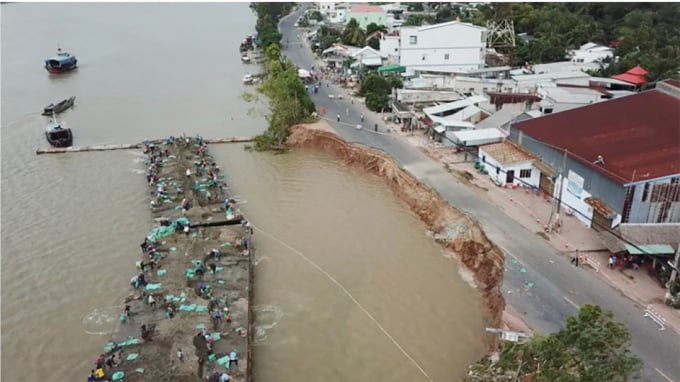
According to Mr. Bui Van Phuong - an expert from the Department of Planning Management under the Ministry of Planning and Investment, the Mekong Delta is a region with a particularly important strategic position. The Party and the Government have implemented various policies and solutions to promote the potential and advantages of the Mekong Delta.
Decision No. 287 dated February 28, 2022 by the Prime Minister, details the planning for the Mekong Delta region in the period of 2021-2030, with a vision towards 2050 based on 9 key strategic breakthroughs: Sustainable development, adaptive green growth in response to climate change; Turning challenges into opportunities to develop the Mekong Delta in combatting flooding, saline and brackish water intrusion; Changing the mindset on food security with regards to agricultural development; Restructuring from small, fragmentated production to focusing on agriculture, industry and urban areas; Focusing on developing infrastructure as a stepping stone for socio-economic development, promoting regional linkages; Developing industrial urban corridors, economic corridors and urban areas along Tien river - Hau river; Changing the mindset on exploitation and use of water resources; Paying attention to preserving the landscape, ecology, culture, history, national culture, with special focus on river culture; Strengthening development links between localities in the region.
The Mekong Delta is a new alluvial land created by the deposition of sediments flowing from upstream. The interlaced river system bears the function of transporting and distributing this amount of sediment throughout the delta, balancing the natural subsidence process of approximately 2cm every year, providing food and nutrition for the flora and fauna of the plain.
The overexploitation of sand, which also means taking away this precious sediment, especially with the annual mining rate of 28 to 40 million tons, the Mekong Delta is suffering from a serious sand deficit at 27.5 to 40 million tons per year; causing erosion and subsidence at the riverbanks and coasts. However, sand mining cannot be stopped immediately due to the strong demand for infrastructure development.
Regarding the assessment of the current landsilde situation in the Mekong Delta, Mr. Nguyen Van Tien, Deputy Director of the General Department of Natural Disaster Prevention and Control (MARD) said that the erosion of riverbanks and coastal areas has been developing substantially every year. The landslides have caused great damages to the infrastructure system and collapsed many local houses; threatening the population as well as production.
“By the end of 2021, the entire Mekong Delta has had 751 areas with a total length of 976km subject to landslides, an increase of 147 areas compared to 2020. In the future, due to the increasing shortage of sand, the rising sea level and intrinsic development will make landslides gradually more dangerous", said Mr. Tien.
According to the Deputy Director, this is a complicated matter and the cause can vary depending on the specific conditions of the river and the coast. As a result, landslides can be caused by currents, waves, soft soil, increased waste, sand mining and so on. Therefore, it is necessary to have adequate research and documentation when assessing each river and coastal section. "Sand mining, hydroelectric dams, sand storages among others give rise to the loss of natural balance in sand, which is a major cause of landslides in riverbanks and coasts", said Mr. Tien.
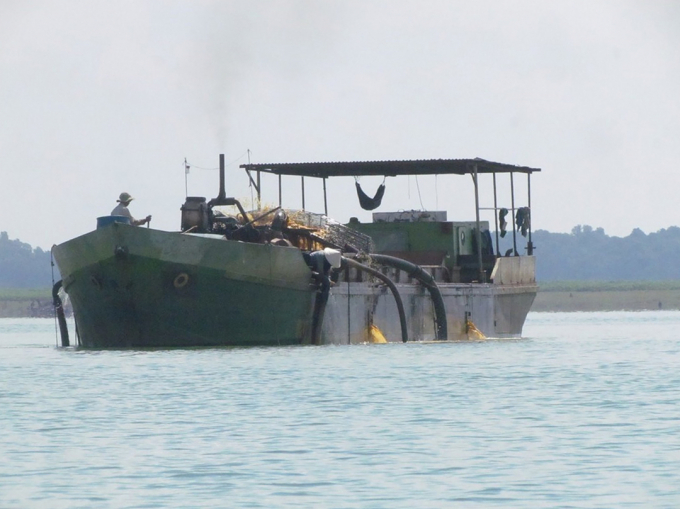
Sand mining on the Tien River.
Mr. Pham Van Bac, Director of the Department of Construction Materials (Ministry of Construction) said that the demand for sand in construction is akin to rice in daily life, whereas everything related to construction must require sand.
Summarized data from provinces and cities' reports predict that the demand for construction sand in 2020 will be over 600 million cubic meter. On the other hand, according to regulations, businesses are only allowed to exploit within the range of 12 to 15 million cubic meter per year. "Supply is low, demand is high, so "sand poachers" are common, leading to very challenging sand mining management. I have inspected and worked with many provinces and cities regarding this problem, the poachers are everywhere, in great numbers. The problem lies in the management, and this is a problem for all levels of government", said Mr. Bac.
According to Mr. Bac, the legal corridor regarding the licensing and management of sand mining is mostly complete and adequate. However, the issue of licensing and mining management depends mainly on the local governments (accounting for 90%).
Deputy Director Nguyen Van Tien said that the Mekong Delta is the downstream region of the international river, so all impacts will affect the entire basin. It is necessary to combine many solutions of both non-structural and structural manners. Namely, non-structural works include active cooperation and coordination within the Mekong Delta to balance the river exploitation; Apply science and technology to manage and control rivers, monitor landslides such as remote sensing, regular measure and monitor to warn and forecast in time. Construction solutions include urgent responses in hot spots, densely populated areas, landslides that have a great impact on economic security, as well as important works. Other solutions include the regulation and stabilization of the river as a whole.
In order to strictly manage the sand mining as well as stabilize the river morphology, according to Mr. Tien, it is necessary to first strengthen the management and synchronize the authorities at all levels, with a focus on the local authorities.
As a specialized unit, Mr. Tien said, he will be responsible for advising the Ministry of Agriculture and Rural Development, the National Steering Committee for natural disaster prevention and control to advise the Government, and speed up the review of provisions under legal documents, promote the inspection, control and management of localities, ministries and sectors, as well as the participation and supervision of the people, to effectively put an end to the problem of illegal sand mining.

The over-exploitation of sand leads to landslides.
The project “Mitigating the impacts of climate change and preventing natural disasters through the participation of the public and private sectors in sustainable sand mining in the Mekong Delta” has been implemented by the General Department of Disaster Prevention (MARD) and World Wide Fund Vietnam with two main activities: "Building a sand bank for the Mekong Delta" and "Plans to maintain river morphology in the Mekong Delta region". The project is carried out in 13 provinces within the Mekong Delta.
The development of a Sand Bank is highly promising. The research results from the Sand Bank will illustrate the balance between the amount of existing sand coming in from upstream and the amount of sand lost due to mining and flowing out to the sea through the main tributaries of Tien River and Mekong River. Subsequently, we can estimate the amount of sand reserves to be exploited while ensuring the sustainable development of the Delta from 2022 to 2030 with a vision towards 2050. In addition, this study will also record seasonal flow fluctuations, data linkages to assess the movement of sand on major river systems.

According to Mr. Pham Van Bac, the Sand Bank needs to determine the amount of existing sand, its origin and how much sand is consumed in each place. The Ministry of Agriculture and Rural Development needs to measure the flow and frequency of sand transport (input), and the allowed annual sand exploitation (output). At the end of the Project, it is necessary to propose to the Government for a sustainable development plan to conserve and exploit sand in the Mekong Delta as well as develop alternative materials for sand (industrial waste (ash, soot), waste of construction industry and artificial sand).
The River Geomorphological Stability Plan (RGSPlan) will respond to the current regulatory agency's urgent need for an action plan to balance sand demand and limit the impacts of sand mining by identifying feasible locations for sand mining while ensuring a low risk of landslides.
Translated by Nguyen Hai Long
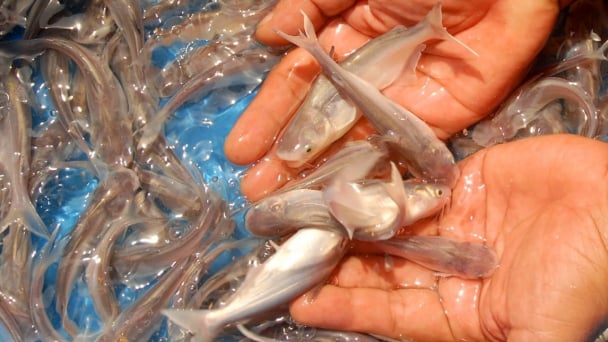
(VAN) Vaccinating juvenile pangasius helps reduce disease, antibiotic use, and farming costs, increasing profits for export-oriented farmers in An Giang.

(VAN) Due to a limited supply of workforce and competitive recruitment requirements, businesses struggle to retain talented veterinary human resources.
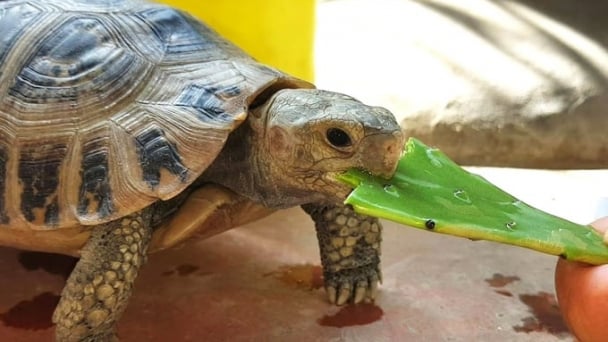
(VAN) WOAH’s guidance aims to mitigate disease risks through a One Health approach that balances economic, conservation, and public health interests.

(VAN) Ms. Nguyen Thi Dung, Deputy Director of Ngoc Hoang Cooperative, shared about the journey of bringing dragon fruit to Europe, achieving annual revenues in the billions of VND.
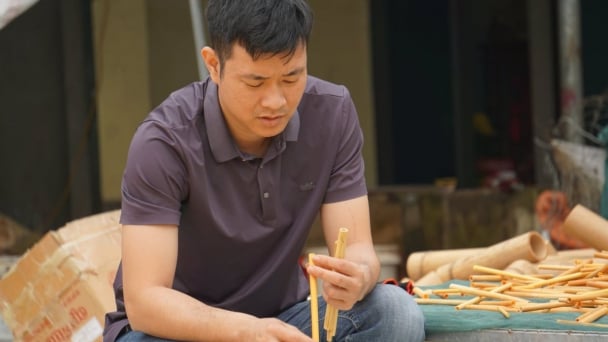
(VAN) Bamboo products from Thang Tho Bamboo Cooperative have reached many countries around the world, while also creating jobs for local workers.
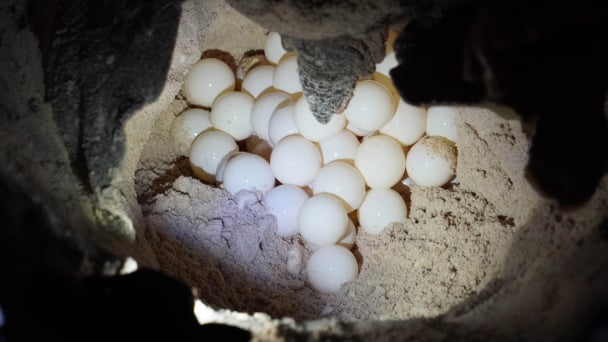
(VAN) The Management Board of Con Dao National Park reported that a green sea turtle, tagged in the Philippines, has traveled thousands of kilometers to lay 84 eggs on Bay Canh Islet.
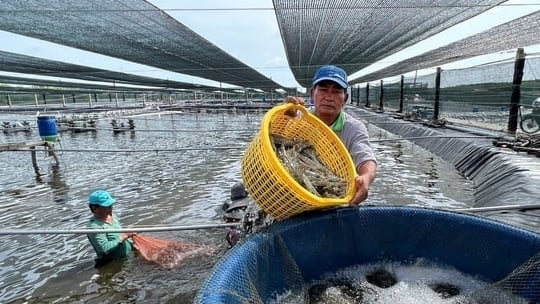
(VAN) Green technology is paving a new path for sustainable aquaculture in the Mekong Delta in particular and across the country in general, helping reduce emissions and adapt to climate change.